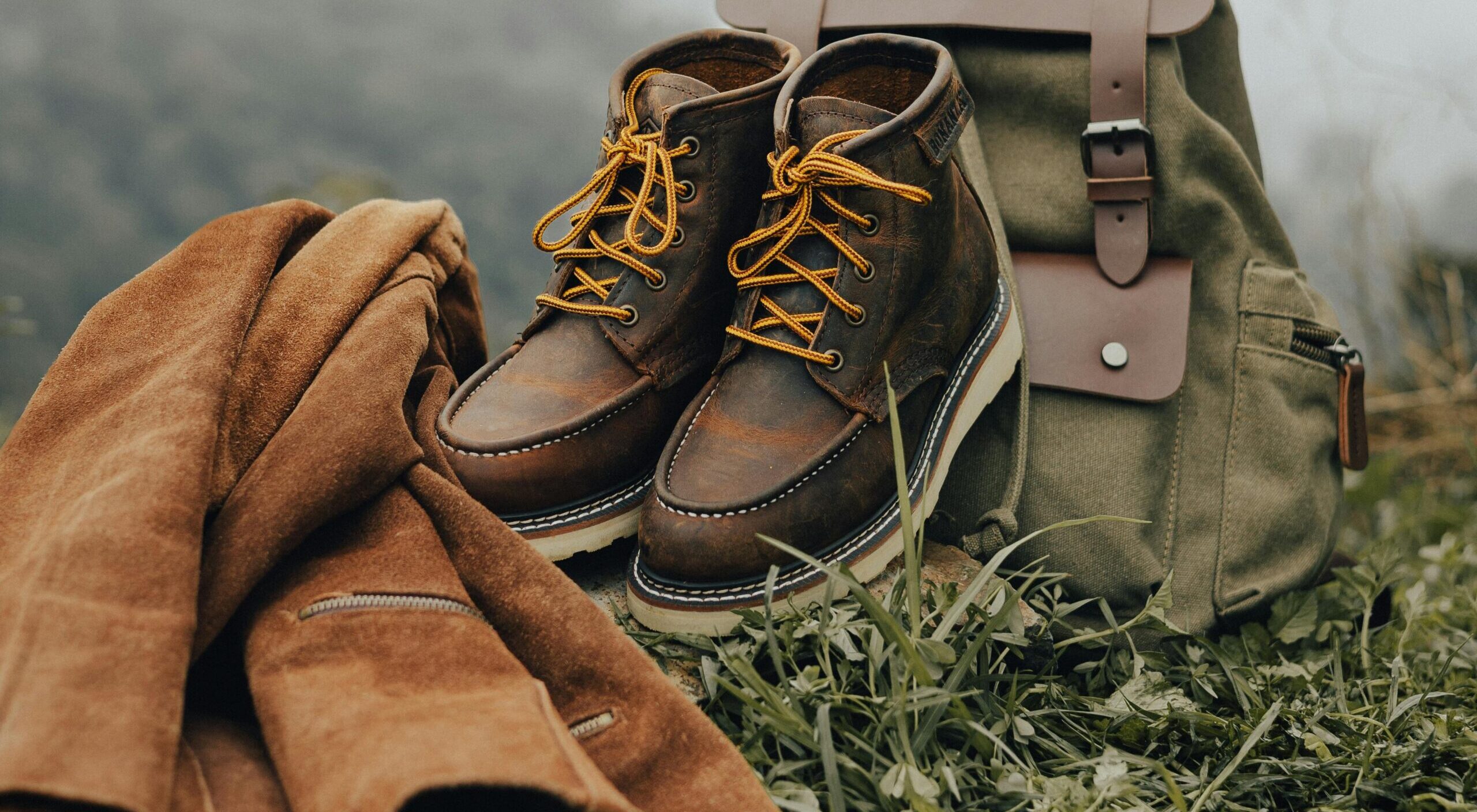
Blog
Eco-Friendly Leather

In today’s world, attention to environmental issues and sustainability has become one of the primary concerns for consumers and producers alike. The leather industry, traditionally known for its consumption of natural resources and the use of harmful chemicals, is now moving towards the production of eco-friendly leather. This type of leather is made from natural and sustainable materials, and its manufacturing processes utilize methods that have minimal impact on the environment. In this article, we will explore the characteristics, types, and benefits of eco-friendly leather.
1. Characteristics of Eco-Friendly Leather :
Eco-friendly leather possesses specific characteristics that distinguish it from traditional leather. Here are some of these key features:
1. Natural Materials :
– No Harmful Chemicals: Eco-friendly leather is typically made from natural materials, such as plant extracts for dyeing, which do not harm the environment.
– Renewable Resources: This leather is sourced from renewable resources, such as trees and plants, which can regrow if harvested sustainably.
2. Sustainable Manufacturing Processes :
– Reduced Water Consumption: The production of eco-friendly leather minimizes water usage and employs water management practices.
– Renewable Energy: Sustainable leather manufacturers often utilize renewable energy sources, such as solar or wind power, in their operations.
3. Minimal Waste :
– Recycling and Reuse: Producers of eco-friendly leather aim to reduce waste and reuse materials, including recycling scrap leather into new products.
– Durable Design: These leathers are often designed for longevity, decreasing the need for replacement.
4. Environmental Compatibility :
– Low Impact on Ecosystems: The production processes for eco-friendly leather are designed to cause less harm to ecosystems and preserve biodiversity.
– Pollution Reduction: They use fewer harmful chemicals in production and dyeing, leading to reduced pollution of water and soil.
5. Health and Safety :
– Free from Toxic Compounds: Eco-friendly leathers do not contain harmful chemicals that can negatively impact human health or the environment.
– Skin-Friendly: These leathers are generally safer for sensitive skin, especially for individuals who may have allergies to certain chemicals.
2. Types of Eco-Friendly Leather :
Eco-friendly leather is becoming a popular option in the fashion industry and the production of leather goods due to its sustainable materials and processes. Below are various types of eco-friendly leather:
1. Vegetable-Tanned Leather :
– Description: This type of leather is tanned using plant extracts, such as tree bark and other natural materials.
– Benefits:
– Free from harmful chemicals.
– Generally has a long lifespan and breathability.
– Develops a beautiful patina over time.
2. Recycled Leather :
– Description: Recycled leather is made from waste leather and other natural materials. This type of leather helps reduce waste.
– Benefits:
– Reduces the consumption of new resources.
– Utilizes waste materials to create new products.
– Usually high in quality and durability.
3. Sustainable Synthetic Leather :
– Description: Some synthetic leathers are produced using recycled or low-impact materials, such as recycled polyester.
– Benefits:
– No need for animal resources.
– Can be produced with a lower carbon footprint compared to traditional leather.
– Offers a variety of designs and colors.
4. Non-Toxic Leather :
– Description: This type of leather is produced without harmful chemicals and toxic compounds.
– Benefits:
– Greater safety for consumers and workers.
– Maintains the natural quality and characteristics of leather.
– Suitable for individuals with sensitivities to specific chemicals.
5. Innovative Natural Material Leathers :
– Description: These leathers are made from unconventional natural materials, such as pineapple , apple, and other plant-based materials.
– Benefits:
– Utilizes sustainable and unusual resources.
– Reduces reliance on the livestock industry.
– Allows for unique and distinctive product designs.

3. Advantages of Eco-Friendly Leather :
Eco-friendly leather offers a range of benefits due to its unique features and sustainable production processes. These advantages can have significant positive impacts on both the environment and society. Here’s a fresh perspective on these benefits:
1. Environmental Protection :
– Pollution Reduction: The production of sustainable leather typically avoids toxic chemicals, helping to minimize water and soil pollution. This contributes to the preservation of natural ecosystems.
– Sustainable Natural Resources: By utilizing plant-based and renewable materials, the pressure on natural resources is alleviated, aiding in the preservation of biodiversity.
2. Quality and Durability :
– Long Lifespan: Eco-friendly leather is often made from high-quality materials, allowing it to last for years without significant wear. This reduces the need for frequent replacements.
– Wear Resistance: Designed to withstand everyday wear and tear, these leathers are durable and maintain their appearance over time.
3. Economic Benefits :
– Long-Term Cost Savings: While the initial purchase cost may be higher, the longevity and durability of eco-friendly leather can lead to cost savings over time.
– Job Creation: Increased demand for sustainable leather can lead to job opportunities in local and sustainable industries.
4. Health and Safety :
– Safer Products: Non-toxic leathers are free from harmful compounds that can negatively affect human health, making them a safer choice for consumers, especially those with sensitivities.
– Comfort and Softness: Eco-friendly leathers are often soft and comfortable, making them ideal for products like footwear and clothing.
5. Awareness and Social Responsibility :
– Promoting Environmental Awareness: Choosing eco-friendly leather raises consumer awareness about environmental issues and the importance of selecting sustainable products.
– Supporting Local Producers: Many sustainable leather producers rely on traditional and local methods, contributing to the preservation of local cultures and communities.
6. Innovation in Design :
– Unique Designs: Innovative leathers made from unconventional materials (like pineapple leaves) allow designers to create distinctive and appealing products.
– Technological Advancements: The eco-friendly leather industry encourages the development of new technologies aimed at more sustainable production methods.
4.Challenges of Eco-Friendly Leather :
While eco-friendly leather has many benefits, it also faces several significant challenges:
1. Higher Production Costs :
– Initial Investment: Eco-friendly materials and processes are often more expensive.
– Market Prices: Higher costs can lead to less accessible retail prices.
2. Consumer Awareness :
– Limited Knowledge: Many consumers are unaware of the benefits of eco-friendly leather.
– Skepticism: Some doubt the quality and durability compared to traditional leather.
3. Supply Chain Issues :
– Material Availability: Sourcing sustainable materials can be challenging.
– Quality Control: Ensuring consistent quality can be difficult.
4. Competition with Traditional Leather :
– Established Market: Traditional leather brands have strong customer loyalty.
– Luxury Perception: Traditional leather is often seen as more luxurious.
5. Regulatory Challenges :
– Lack of Standards: No universal definitions for “eco-friendly” leather exist.
– Certification Costs: Obtaining sustainability certifications can be expensive.
6. Environmental Impact of Raw Materials :
– Resource Intensive: Some plant-based alternatives require significant resources.
– Land Use: Cultivating crops for alternatives can affect local ecosystems.
Conclusion
Enhancing consumer education, establishing clearer standards, and improving supply chains are essential for promoting eco-friendly leather. By overcoming these obstacles, eco-friendly leather can significantly contribute to a more sustainable future in the fashion industry. Choosing these products supports environmental conservation and responsible consumerism.

